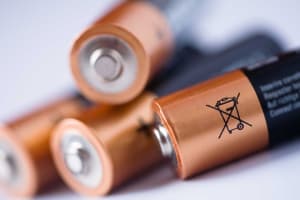Q: Why did Kidde create Worry-Free Alarms?
A: A recent survey of American homeowners confirmed the low battery chirp as their top annoyance with smoke alarms, followed closely by nuisance alarms.
Q: How did Kidde select the recommended locations of the Worry-Free alarms?
A: The NFPA recommends installing smoke alarms on each level, as well as inside and outside of sleeping areas. However, survey results show less than a quarter of homeowners comply with this recommendation.
In fact, three out of four homeowners don’t know where to place alarms in their homes. Each Worry-Free alarm is designed with location-specific features to help consumers choose the right alarm for the right location including:
-
Kitchen – cooking is the leading cause of U.S. home fires and injuries
-
Outside of bedrooms and the main path through a home
-
Bedroom – half of all home fire fatalities occur between the hours of 10 p.m. and 6 a.m., when most people are asleep
-
Living Area - although only 4% of home fires start in the living room, family room, or den, these fires cause 24% of deaths
Q: How are Worry-Free Alarms powered?
A: The battery lasts for the life of the alarm. Because it is sealed, the battery cannot be removed or easily tampered with.
Q: How often do I need to replace the battery?
A: Never. Because the lithium battery is sealed inside the unit, you won’t have to replace the battery for the life of the alarm, which is ten years. Fire experts recommend replacing smoke alarms every ten years.
Q: Is there a way to hush nuisance alarms, such as if I burn toast in the kitchen?
A: Yes. In the rare event that a nuisance alarm does occur, Kidde’s Worry-Free Alarms have a hush button feature that will temporarily silence the smoke alarm if a non-emergency condition activates it. Simply push the button on the alarm to temporarily silence the system for about seven minutes. This button will also test the operation of the alarm. Kidde recommends testing your smoke alarms weekly.
Q: What is the lifespan of the Worry-Free Alarms?
A: Each alarm has a limited 10 year warranty.
Q: Do you install these alarms the same way you install traditional smoke alarms?
A: No. These alarms feature a one-screw mounting bracket to make installation easy. After the mounting bracket is in place, simply align the alarm with the mounting plate and rotate the alarm clockwise until the unit stops and clicks into place. The alarm is automatically activated when the alarm is attached to the mounting plate for the first time. You will know power has been supplied when the alarm briefly chirps. Once activated, the battery will supply power to the unit for ten years — the life of the alarm.
Q: What happens after ten years?
A: After ten years, the alarm will sound an end-of-life warning, alerting you to replace the unit. You will know it’s an end-of-life chirp because you will hear two chirps every 30 seconds. When you hear this warning, it’s important to disable your alarm and replace it right away to help keep your family safe.
Q: How do I disable my alarm?
A: Remove the alarm from the mounting plate by rotating it counterclockwise (as indicated by the arrows on the cover of the alarm). Next, on the back side of the alarm, locate the area marked with a long arrow on the product label. Break through the label with a screw driver and turn the screw to the “OFF” position. This will deactivate the alarm, stop the end-of-life warning and render the alarm safe for disposal by draining the battery.
IMPORTANT: Deactivation of the alarm is permanent. Once the alarm has been deactivated, it cannot be reactivated or mounted back onto the mounting plate and will no longer detect smoke or carbon monoxide. This is why it’s imperative to replace your alarm immediately.
Q: When the Worry-Free Kitchen Alarm sounds, how do you know if it’s because of a fire or carbon monoxide?
A: Varied beeping alarms announce the type of hazard present. Three long beeps repeating every 1.5 seconds indicates a fire hazard. Four quick beeps repeating every 5 seconds indicates the presence of carbon monoxide.



